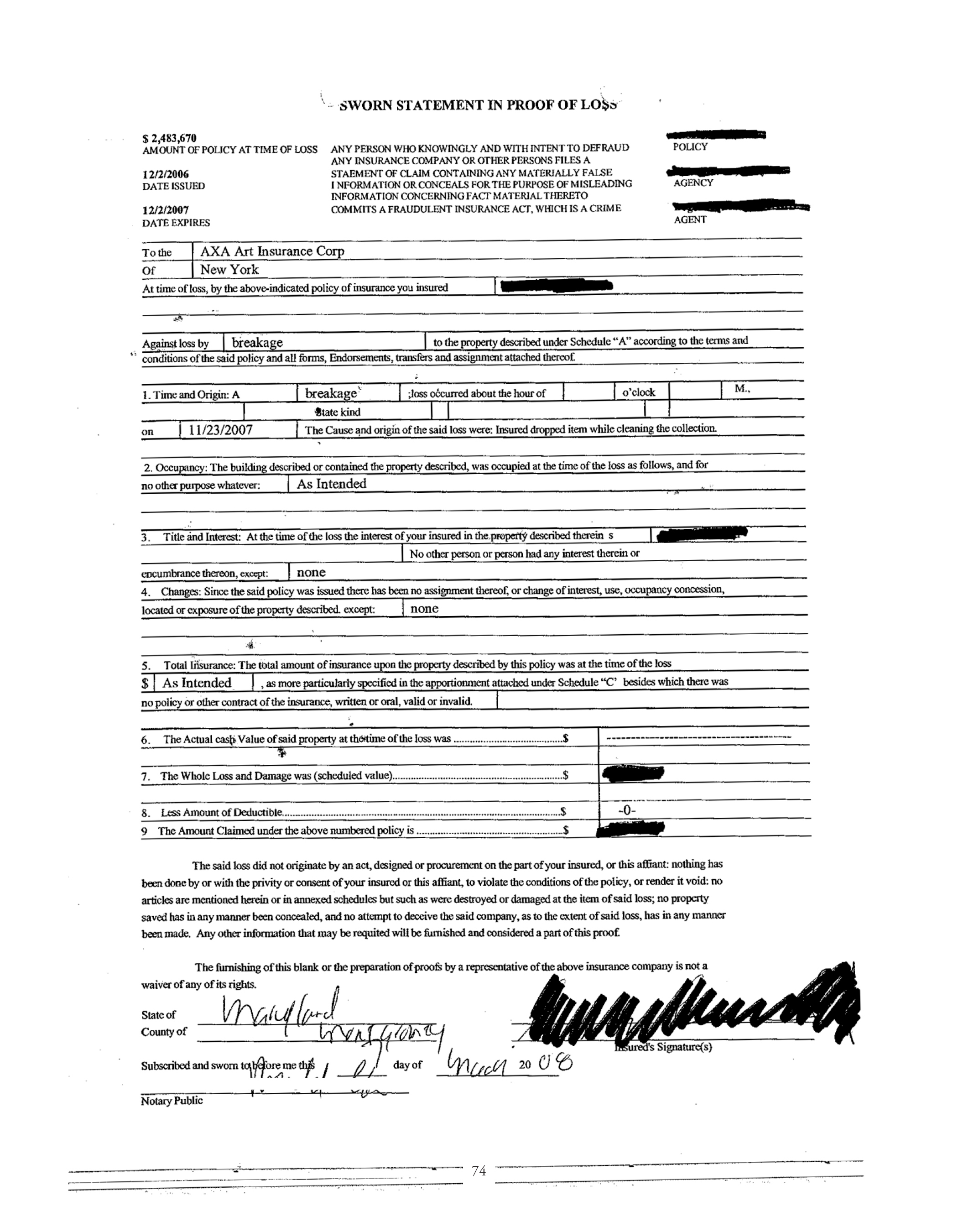.
No Longer Art: A Narrative
While Salvage Art Institute’s damaged objects by far have a greater spectacular presence, the documents accompanying each salvaged artwork— the emails, legal papers, and loan forms—are not lacking in their own intrigue. Surely, at least, they are breathtakingly thorough: oftentimes, the packages we received from AXA Art Insurance Corporation traced the history of an artwork’s path toward total-loss in its entirety, from the first report of damage all the way through the declaration of total loss and the transfer of title.As Salvage Art Institute reviewed these documents, we noticed that, despite significant differences in medium and type of damage, each piece’s legal trajectory toward total loss was remarkably similar. When we looked closer, however, we discovered that there was more at play than actuarial logic. Despite attempts to retain the neutral tone of legalese, at times bursts of feeling and character broke through. The signs of this surfeit of emotion were subtle—scribbles and cross-outs, exclamation points, celebratory language, personal addresses—but could not be ignored. We decided it would be a mistake to view the events recorded in these documents as simply the emotionless unwinding of a legal mechanism; instead, given the extralegal feelings involved, they’d best be viewed through a dramatic lens. There was not just legal formality here, but narrative structure.
With this in mind, we reimagined the path an artwork takes from damage to total loss as a saga that would read almost like an epic poem, with its own dramatic personae and narrative beats: the property became our protagonist, the damage the inciting incident, the conservation report and valuation the trials and tribulations of the second act, and the resolution of the claim the catharsis bringing the story to its close. To compose this drama, we extracted each plot point from the individual documents and collaged them together to create a master narrative. No Longer Art: A Narrative is the result of that collage process.
A collaboration with Elka Krajewska.











